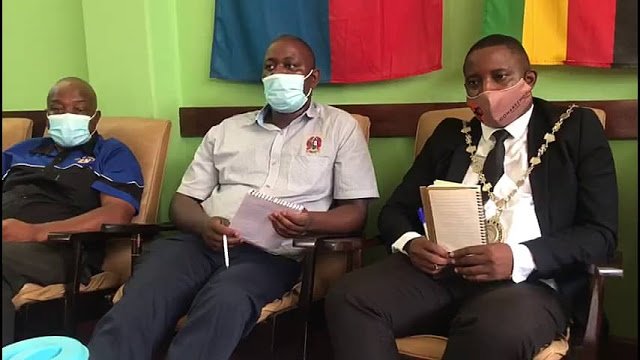 |
| Fidelicy Nyamukondiwa |
Whilst
it might be a bitter pill to swallow for relatives and concerned citizens,
there is generally nothing unusual for a magistrate to impose a fine or
community service to a killer driver. However, each case must be dealt with
according to its own facts and merits.
There
was a public outcry when a Masvingo magistrate ordered an unlicensed killer
driver to perform community service after a tragic road traffic accident along
Jongwe Road in Pangolin.
The
accident took three human lives and resulted in the injury of four other
pedestrians.
As
usual, some sections of the public were quick to point fingers at the trial magistrate.
Our Constitution guarantees freedom of expression and opinion. For that reason,
there is nothing wrong in expressing views on a court judgement.
That
corruption is rife in Zimbabwe is undeniable. But to hasten to conclude that a
particular magistrate is corrupt without doing a proper research is something
else. I myself, have in the past
publicly criticized some High Court and Supreme Court judgements. I however do thorough research before critiquing.
Facts
of the case.
The
fatal accident occurred in Pangolin, a high density suburb about 6kms out of
Masvingo town . It happened on the 28th of August 2020. On the
fateful day, 26 year old Tendai Twelezinhle Gondo whom I shall refer to as “the
accused” was driving a Toyota Vista without a driver’s license.
The
accused rammed into a car which was in front of him. Instead of stopping, he
sped off from the accident scene. In the process, he tried to overtake an
undisclosed number of cars which were in front of him. Put differently, he drove
for a remarkable distance but on the wrong lane. The accused then lost control
of the vehicle and bumped into a group of seven pedestrians. As if that was not
enough, he did not stop. He sped off again, only to show up at the police
station the following day.
One
person died on the spot and two were pronounced dead upon arrival at Masvingo
Provincial Hospital. The remaining four pedestrians sustained very serious
injuries. The injuries were so serious
to the extent that there is a possibility of permanent injury for one of the
survivors.
These
are the unchallenged facts that were presented to the magistrate.
The
charges and sentence
The
accused was charged with four counts; driving without a license, negligent
driving arising out of ramming the car which was in front, culpable homicide
and fail to stop after an accident. The propriety of the number of charges is a
discussion for another day. What is
important is the fact that the represented accused pleaded guilty to all four
charges and was subsequently convicted.
The
magistrate sentenced the accused to 24 months imprisonment, 12 months of which
were suspended on the usual conditions of good behavior. The remaining 12
months were suspended on the condition that he performs 420 hours community
service at a local school. In addition, he was prohibited from driving for 2
years.
Analysis
Sentencing
is not as easy as it might seem. Magistrates are guided by sentencing
provisions set out in the relevant statutes, previous High Court and Supreme Court
decisions and, above all, the circumstances surrounding each particular case.
In
culpable homicide cases arising out of road traffic accidence, the majority of
previous superior court decisions lean in favour of non-custodial sentences. In S v Duri (1989) the Supreme Court
okayed the imposition of a fine to a driver who knocked down and killed a 5
year-old-child. In S v Ferreira (1992), the
accused was also ‘fined’ for killing a 7-year-old boy. In S v Duduzile
Manhenga (2015), an unlicensed driver paid fine for killing a cyclist.
As hinted earlier on, each case must be treated according to its facts
and merits. In S v Lusenge, former Chief Justice Fieldsend
( 1981) remarked; “..unless it can be shown by the
evidence that the accused is guilty of this class of negligence it would be
improper to send a first offender to prison for a driving offence.”
The word “unless” imply
that imprisonment can be justified in certain cases. It is in cases where the class
of negligence is gross that imprisonment can be imposed. Negligence can be classified
as either ‘ordinary’ or ‘gross’. In the case of S v Mtizwa, an accused
drove on the wrong side of the road and killed a cyclist. The High Court found
that imposition of a fine was inappropriate because the negligence was gross.
Two years ago, a
fatal accident involving a Higer bus and a Land Rover occurred a few kilometres
out of Masvingo town along Masvingo Beitbridge road. A total of six people died
in the gross negligence case. High Court judges, Justice Mawadze and Mafusire
frowned upon the imposing of a fine in the case (S v Chifumuro).
In the case under
review, the unlicenced driver drove on the wrong side of the road in a high
density suburb were traffic volume is normally high. That seven people were in
the road is testimony that the road was even busier on the fateful day. That in
my view is gross negligence, if not recklessness.
Having realised
that he had run over a number of pedestrians, the accused did not bother to
stop and render assistance to the victims. He left them to die! He sped off at a high speed, endangering more
motorists and pedestrians. It goes without saying that his moral blameworthiness
was very high.
As
mentioned above, sentencing is not an easy process. A number of factors have to
be considered. The accused is a youthful first offender who was said to be a
GZU student. Although relatives have reportedly complained that he did not
fulfil his promises, it is a fact that his family rendered financial assistance
towards funeral and medical expenses.
Be
that as it may be, the public prosecutor who dealt with the case was of the
view that accused drove recklessly and hence imprisonment was inescapable. The
trial magistrate however thought otherwise. In the S v Chifumuro case
mentioned above, the public prosecutor also suggested imprisonment but the
magistrate would hear none of it.
Recommendation
and conclusion
If
a person drives a commuter omnibus without a license, the law provides that
imprisonment “must” be imposed regardless of whether or not the person is
involved in an accident. In such cases, magistrates generally have no option
but to impose not less than six months imprisonment. This is called a minimum
mandatory sentence. Stock Theft is another example of an offence with a minimum
mandatory sentence (nine years imprisonment).
It
is high time the law gets amended such that if a person drives any form of
motor vehicle without a license, he/she be imprisoned without any other
option. The latter will go a long way in
putting unlicensed persons off the steering wheel.
May
the souls of all those who lost their lives through road traffic accidents rest
in peace. Drive, ride and walk cautiously this festive season and forever.
Human lives are precious and irreplaceable.
Wish
you a happy new year 2021!
Fidelicy Nyamukondiwa is a former public prosecutor
who writes here in his personal capacity. Follow @FidelNyams on Twitter.
0718975244 for views and comments






